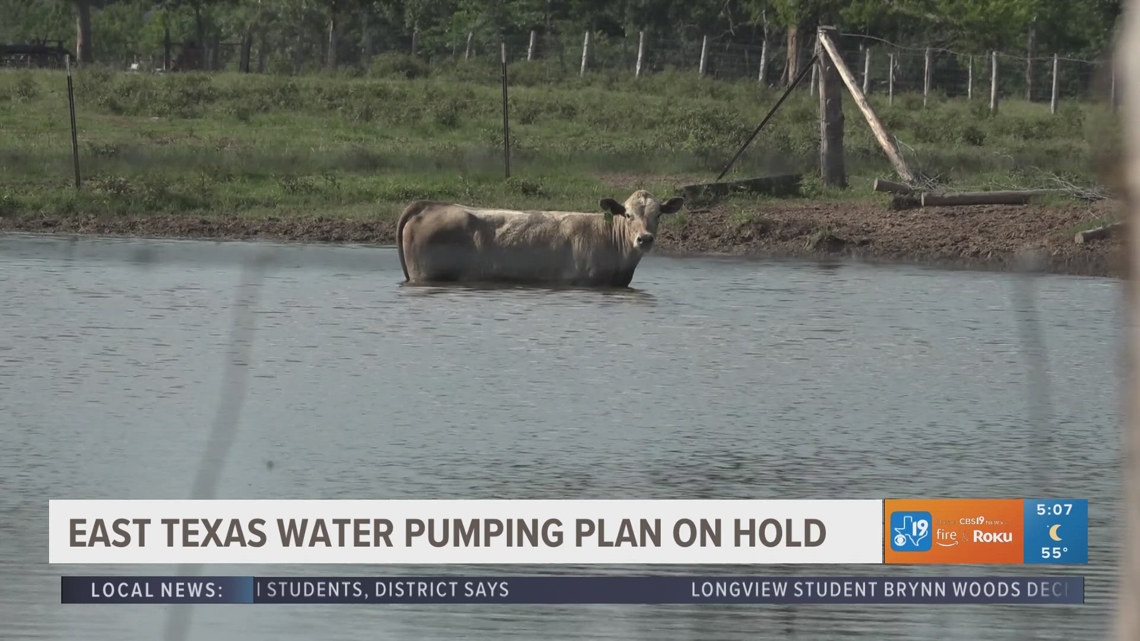Report on Lead Detection in North Mohave Valley Public Water System and Alignment with Sustainable Development Goals
1.0 Executive Summary
This report details an incident of lead detection in the North Mohave Valley Public Water System, Bullhead City, Arizona. During routine testing, two residential properties registered lead levels exceeding the Environmental Protection Agency (EPA) action level. This event directly impacts the community’s progress toward key United Nations Sustainable Development Goals (SDGs), particularly SDG 6 (Clean Water and Sanitation) and SDG 3 (Good Health and Well-being). City officials have initiated a response plan to assess and mitigate risks, ensuring the continued safety of the public water supply in line with SDG targets.
2.0 Incident Details and Initial Findings
The Bullhead City Utilities Department identified the elevated lead levels during scheduled compliance monitoring. While the system remains in compliance with state and federal regulations, the findings have prompted further investigation.
- Detection: Two homes in the service area tested above the EPA action level for lead.
- Regulatory Status: State agencies have confirmed that the North Mohave Valley Public Water System is not in violation of any drinking water standards.
- Infrastructure Assessment: The Bullhead City Utilities Director stated it is “highly unlikely” that lead pipes exist within the public system, noting that materials such as PVC, asbestos cement, and ductile iron were used during its construction, aligning with efforts to build resilient infrastructure (SDG 11).
3.0 Alignment with Sustainable Development Goals
The city’s response to the lead detection is critical for advancing specific SDG targets related to public health, water quality, and sustainable communities.
3.1 SDG 6: Clean Water and Sanitation
Ensuring access to safe drinking water is the central objective of SDG 6. The incident highlights the necessity of continuous monitoring and proactive management of water resources. The city’s planned actions demonstrate a commitment to this goal.
- Comprehensive Assessment: Officials will work to assess the full extent of lead exposure within the water system.
- Source Water Testing: Over the next year, the city will test the source water to identify potential contamination points.
- Expanded Residential Sampling: Additional sampling of homes will be conducted to determine the scope of the issue and inform further action.
3.2 SDG 3: Good Health and Well-being
Protecting residents from hazardous chemicals is a key component of SDG 3. Lead exposure poses significant health risks, and the city has issued precautionary guidance to safeguard community well-being.
- Public Health Advisory: Customers are encouraged to flush their plumbing systems by running faucets, showering, or operating water-using appliances before using tap water for drinking or cooking. This immediate measure aims to reduce potential lead exposure.
3.3 SDG 11: Sustainable Cities and Communities
This incident underscores the importance of maintaining safe and resilient infrastructure as a foundation for sustainable communities (SDG 11). The city’s investigation into the source of the lead will inform future infrastructure management and investment, ensuring basic services are reliably and safely provided to all residents.
SDGs Addressed in the Article
-
SDG 3: Good Health and Well-being
- The article discusses the presence of lead, a hazardous chemical, in the drinking water of two homes. Lead exposure is a significant public health concern that can lead to a variety of illnesses and developmental issues, directly connecting the issue to the goal of ensuring healthy lives and promoting well-being.
-
SDG 6: Clean Water and Sanitation
- The core issue of the article is the contamination of a public water system. It highlights the process of “routine testing,” the detection of lead “above the EPA action level,” and the city’s plans for “additional sampling” to ensure the safety of the water supply. This directly relates to the goal of ensuring the availability and sustainable management of water and sanitation for all.
Specific SDG Targets Identified
-
Target 3.9: By 2030, substantially reduce the number of deaths and illnesses from hazardous chemicals and air, water and soil pollution and contamination.
- The article’s focus on lead contamination in drinking water directly aligns with this target. Lead is a hazardous chemical, and its presence in the water supply poses a direct risk of illness to the population. The city’s actions to assess and reduce lead exposure are efforts to mitigate this health risk.
-
Target 6.1: By 2030, achieve universal and equitable access to safe and affordable drinking water for all.
- The discovery that water in two homes tested “above the EPA action level for lead” indicates that the water supplied to these residents is not safe. The article’s entire premise revolves around identifying and addressing a failure to provide safe drinking water, making this target highly relevant. The city’s ongoing testing is a measure to ensure progress toward this target.
Indicators for Measuring Progress
-
Indicator for Target 6.1: The level of lead concentration in drinking water, measured against established safety standards like the “EPA action level.”
- The article explicitly states that “Two homes… tested above the EPA’s action level for lead.” This measurement is a direct indicator of water safety. It can be used to track the proportion of the population served by the North Mohave Valley Public Water System that has access to safely managed drinking water, which is the essence of Indicator 6.1.1 (Proportion of population using safely managed drinking water services). The number of homes exceeding the action level is a quantifiable measure of the problem.
-
Indicator for Target 3.9: The extent of lead exposure in the public water system.
- The article mentions that city officials are “working to assess the extent of lead exposure” and will “conduct additional sampling of homes in the service area.” This assessment process itself serves as an indicator. The results of these tests—specifically, the number of homes with elevated lead levels and the concentration of lead found—provide a measure of the population’s risk of exposure to a hazardous chemical, which is a key concern of Target 3.9.
SDGs, Targets, and Indicators Analysis
| SDGs | Targets | Indicators |
|---|---|---|
| SDG 3: Good Health and Well-being | Target 3.9: Substantially reduce the number of deaths and illnesses from hazardous chemicals and water pollution and contamination. | The extent of lead exposure in the public water system, identified through the city’s plan to “assess the extent of lead exposure” and “conduct additional sampling.” |
| SDG 6: Clean Water and Sanitation | Target 6.1: Achieve universal and equitable access to safe and affordable drinking water for all. | The number of homes with water testing “above the EPA’s action level for lead,” which serves as a direct measure for Indicator 6.1.1 (Proportion of population using safely managed drinking water services). |
Source: 12news.com






